A Resplendent quetzal hides in the trees in Selvatura Park in Costa Rica. It’s the national bird of Guatemala but popular here, too/Jennifer Bain
We lurch towards a telltale commotion at the end of a hanging bridge in the Costa Rican cloud forest, trying to stay steady in the wind while fumbling with binoculars and cameras. A bird sits still in the trees in a vain attempt to hide its shimmering metallic blue-green plumage and long flowing trail feathers.
Well, hello Resplendent quetzal — aren’t you a beauty.
A sacred symbol to several cultures, the quetzal likely inspired Quetzalcoatl, the “plumed serpent” god of Mesoamerica who legend says helped create Earth. Its shining feathers were once made into headdresses for rulers and nobility.
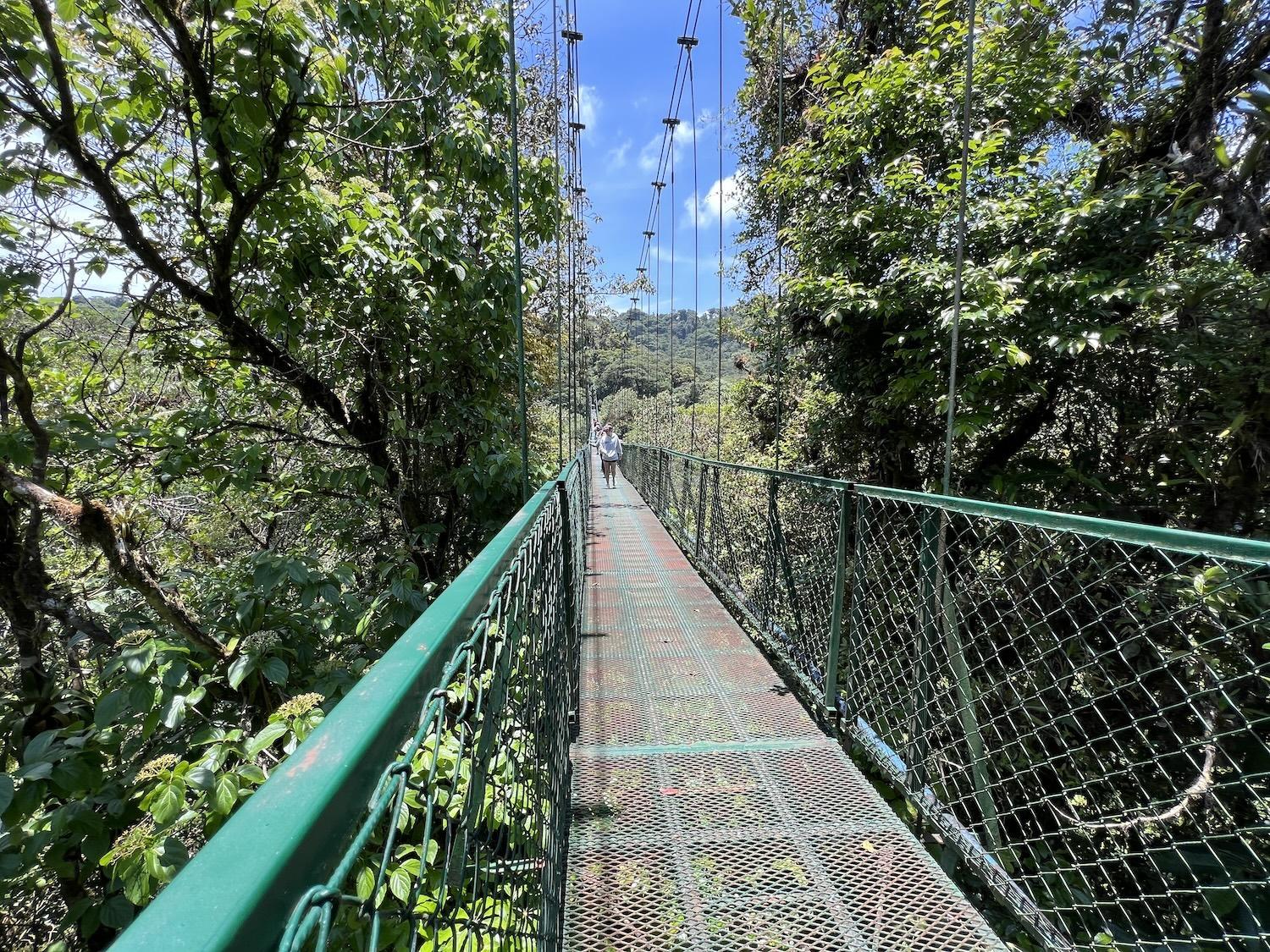
At Selvatura Park, people walk through the cloud forest on eight hanging suspension bridges/Jennifer Bain
It’s April in Costa Rica and that means mating season when male quetzals grow elongated upper tail coverts that form a spectacular train of feathers. But while we don’t get to see a male rise above the canopy and then plunge down to a female in a dramatic courtship ritual, we are grateful to simply glimpse this near-threatened species in Selvatura Park.
“When you’re in the forest, the most amazing words are `Look!’ `Where?’ `Gone,’” says our tour guide and birder extraordinaire Monica Leal.
In this case, though, we’re the ones who leave to make way for other eager birders. We’ve all come to this ecological adventure and nature park near the Monteverde Cloud Forest Biological Preserve to take the Treetop Walkway, crossing eight suspension bridges connected by forest trails, birding while we go or perhaps heading to the zipline.
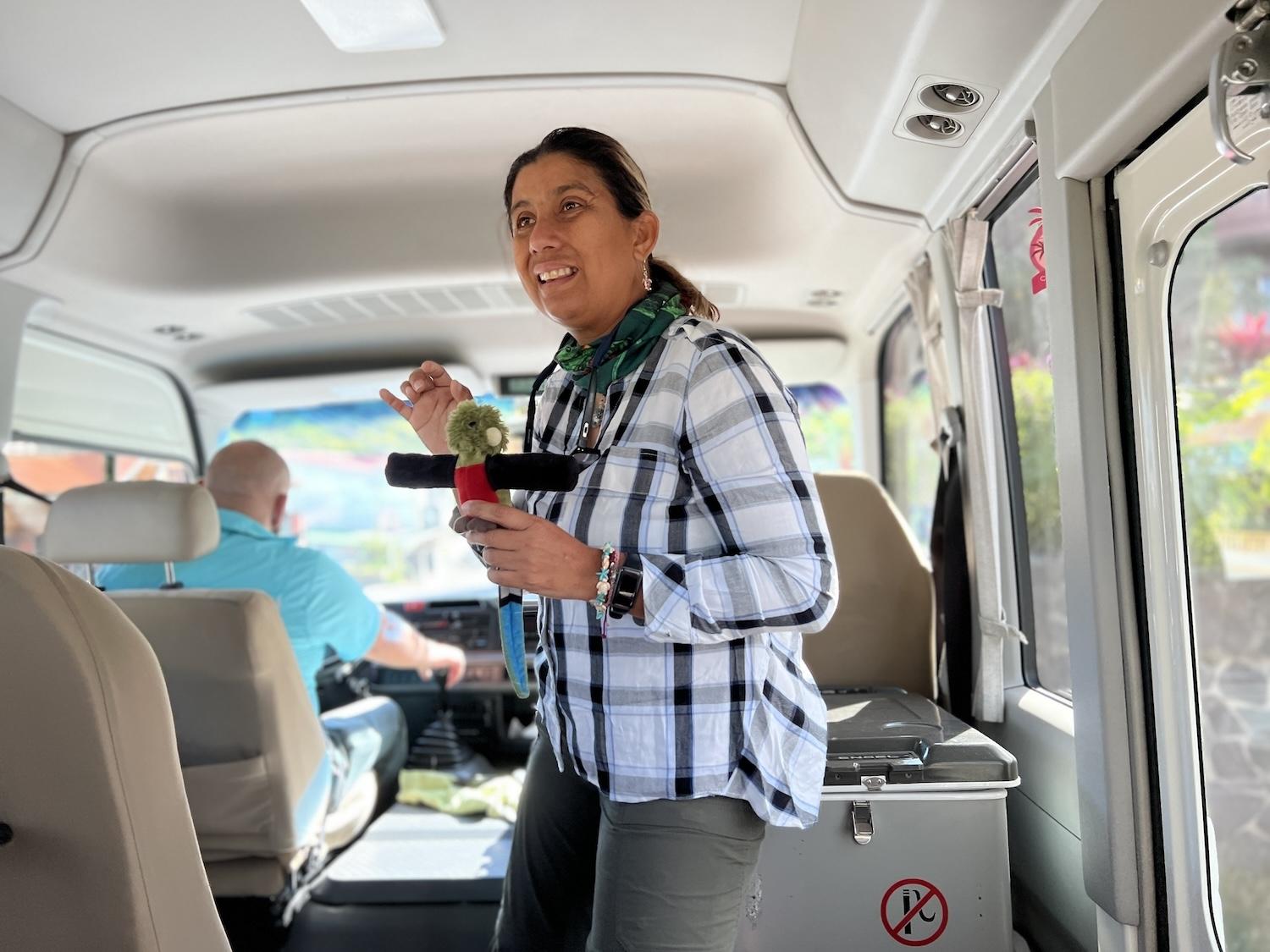
Costa Rican tour guide Monica Leal talks about a Resplendent quetzal by using a plush toy/Jennifer Bain
Cloud forests (bosque nuboso in Spanish) are a type of rainforest found at high altitudes in tropical or subtropical mountainous areas. National Geographic has called Monteverde the “jewel in the crown of cloud forest reserves.” Tourism officials call the area “Costa Rica’s eco-epicenter” and “nature’s terrarium.”
I’m here to see why Costa Rica is touted as one of the most biodiverse places on the planet. Joining Exodus Adventure Travels for an eight-day trip called “Natural Highlights of Costa Rica,” I criss-cross the small Central American country by mini-van with Leal, a driver and eight other guests from around the world.
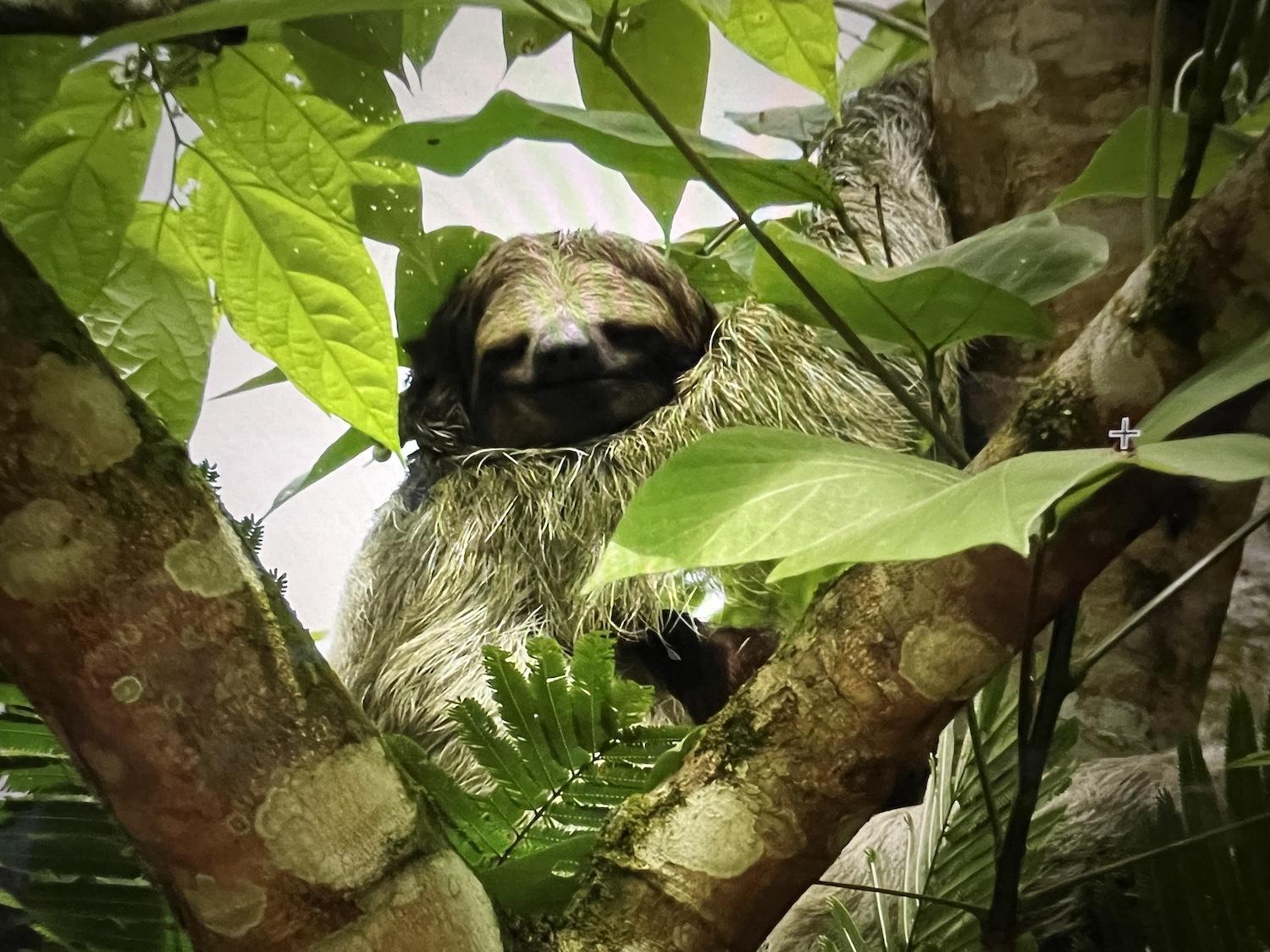
Sloths are one of the most popular animals in Costa Rica, and are surprisingly hard to photograph since they’re usually found sleeping high up in the trees/Jennifer Bain
We start at Tortuguero National Park — home to sloths, sea turtles, howler monkeys and much more — before exploring Monteverde, the Santa Elena Cloud Forest Reserve, the Caño Negro Wildlife Refuge and the Arenal Volcano National Park area.
I say “area” because while Costa Rica has 20 national parks and two national refuges, there are plenty of protected places and it’s not always clear what’s public, what’s private and who’s in charge. What’s important is that the country preserves nearly 30 per cent of its land including rainforests, cloud forests, jungles, islands, beaches, volcanoes, hot springs, caves, river canyons and waterfalls.
Of all the rules listed on the Spanish sign at Santa Elena, my favorite orders visitors to “avoid making unnecessary or annoying noises” in the cloud forest reserve.
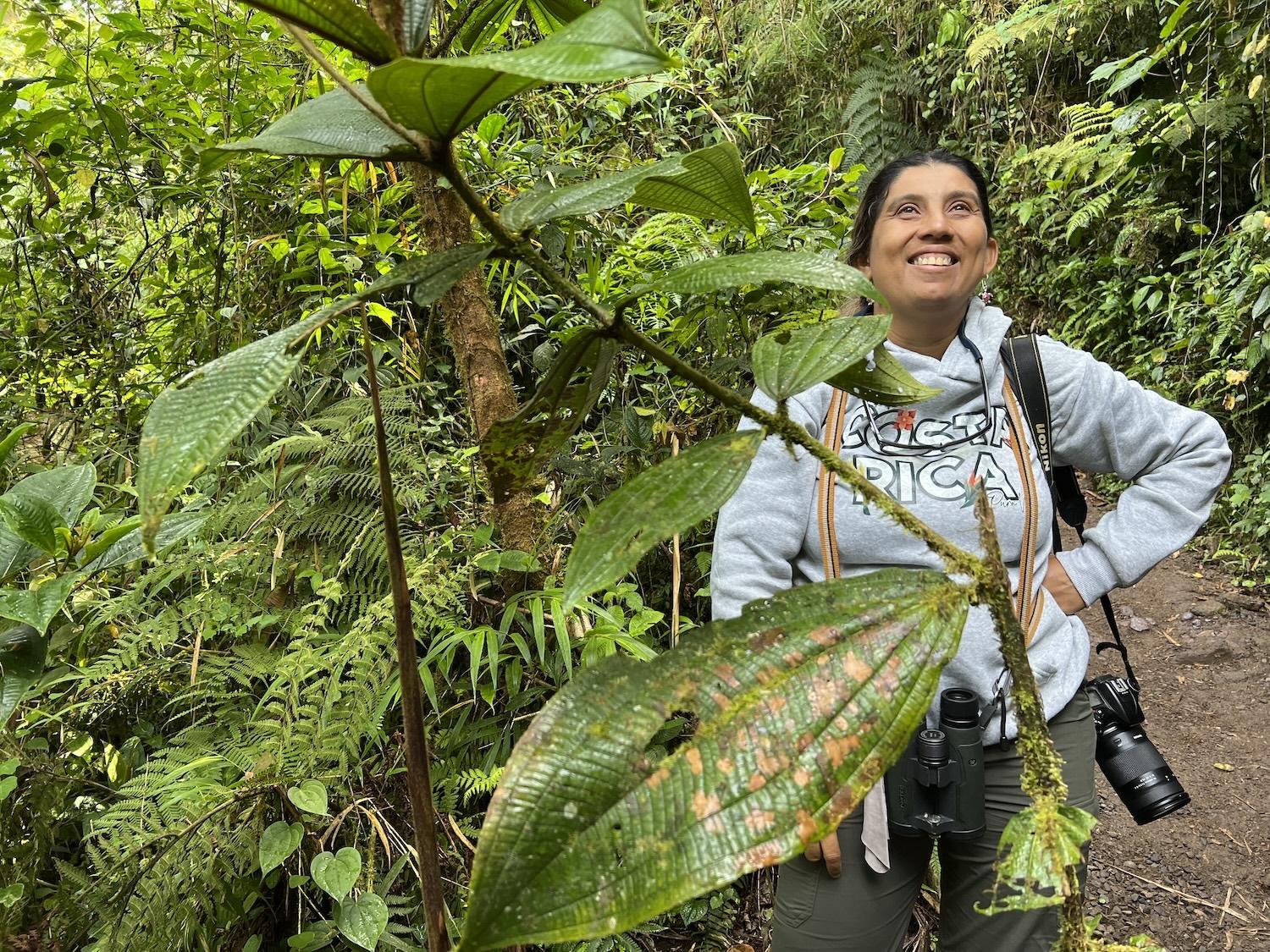
Costa Rican tour guide Monical Leal stands in the Santa Elena Cloud Forest Reserve/Jennifer Bain
“Something that I love to do when I come here is to be quiet for a moment and listen to the forest,” says Leal as she leads us down the reserve’s trails. “Keep your eyes wide open. This is not a marathon. The idea is to go slow. This forest is dense so chances are you will see things a little lower.”
This land belongs to the government — the National System of Conservation Areas (SINAC) — but the community manages the reserve through the administration board of a public high school that gets its students involved in environmental education and citizen science.
I note approvingly that single-use plastics are banned here, including plastic bags and disposable water bottles. Then I realize that it’s Apr. 22, 2023 — Earth Day, a day to demonstrate support for environmental protection.
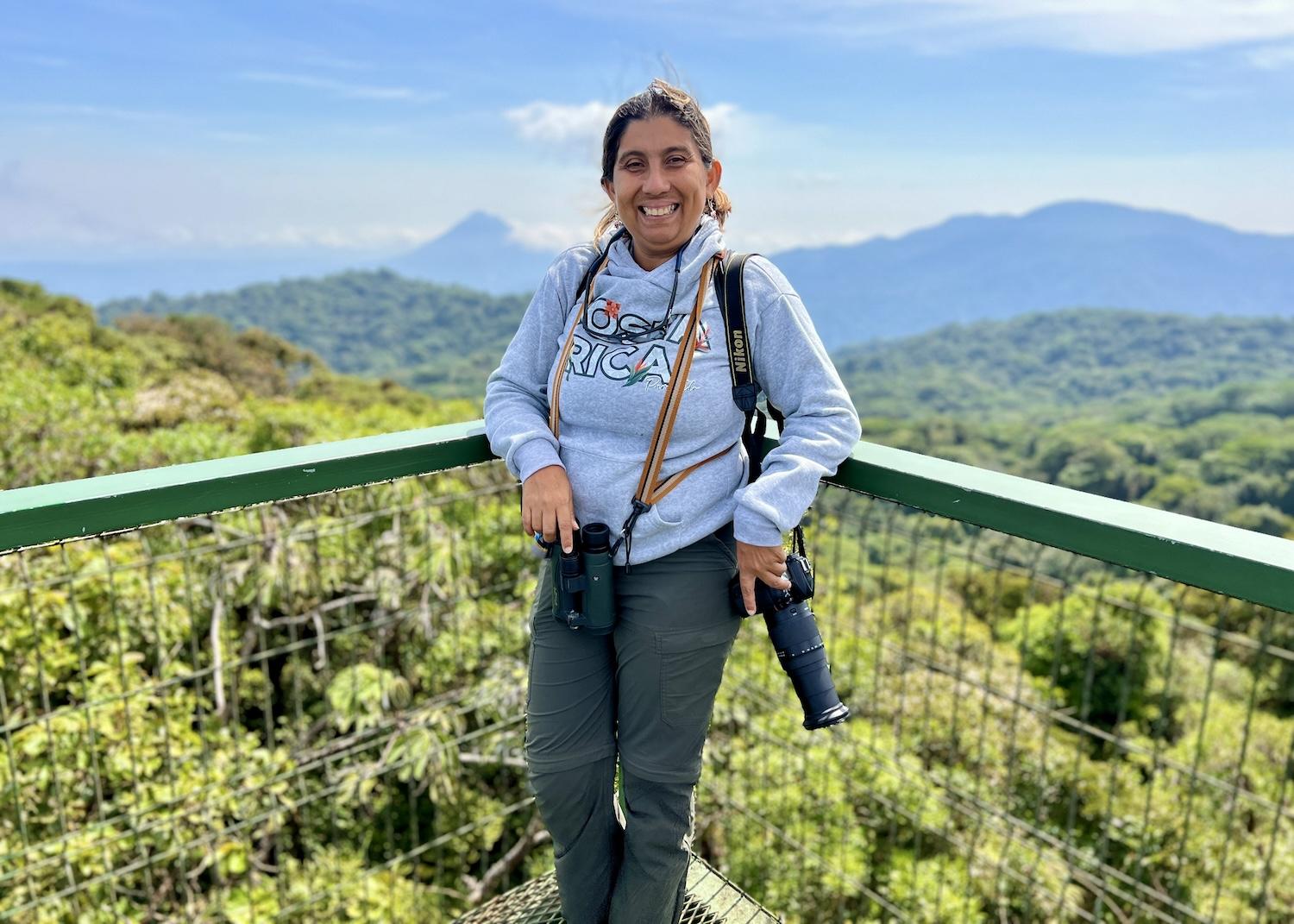
Costa Rican tour guide Monica Leal stands on the observation tower in Santa Elena Cloud Forest Reserve/Jennifer Bain
Wandering slowly and quietly through the near-constant mist, we marvel at old-growth trees covered in moss, linger at an observation deck and climb an observation tower for views of three distant volcanoes.
We discuss tree ferns and other flora, hear all kinds of exuberant birds, and watch a coatimundi climb a tree. “They’re beautiful but their behavior is like a raccoon,” says Leal.
What stands out is a bizarre foam mass made by túngara frogs that Leal’s grandparents used to joke was snake saliva. When a female frog lays a combination of eggs and jelly, the male collects it with his hind feet, fertilizes it and whips it into a fist-sized, protective foam mass that’s usually placed near puddles on the forest floor.
Fact is infinitely stranger than fiction.
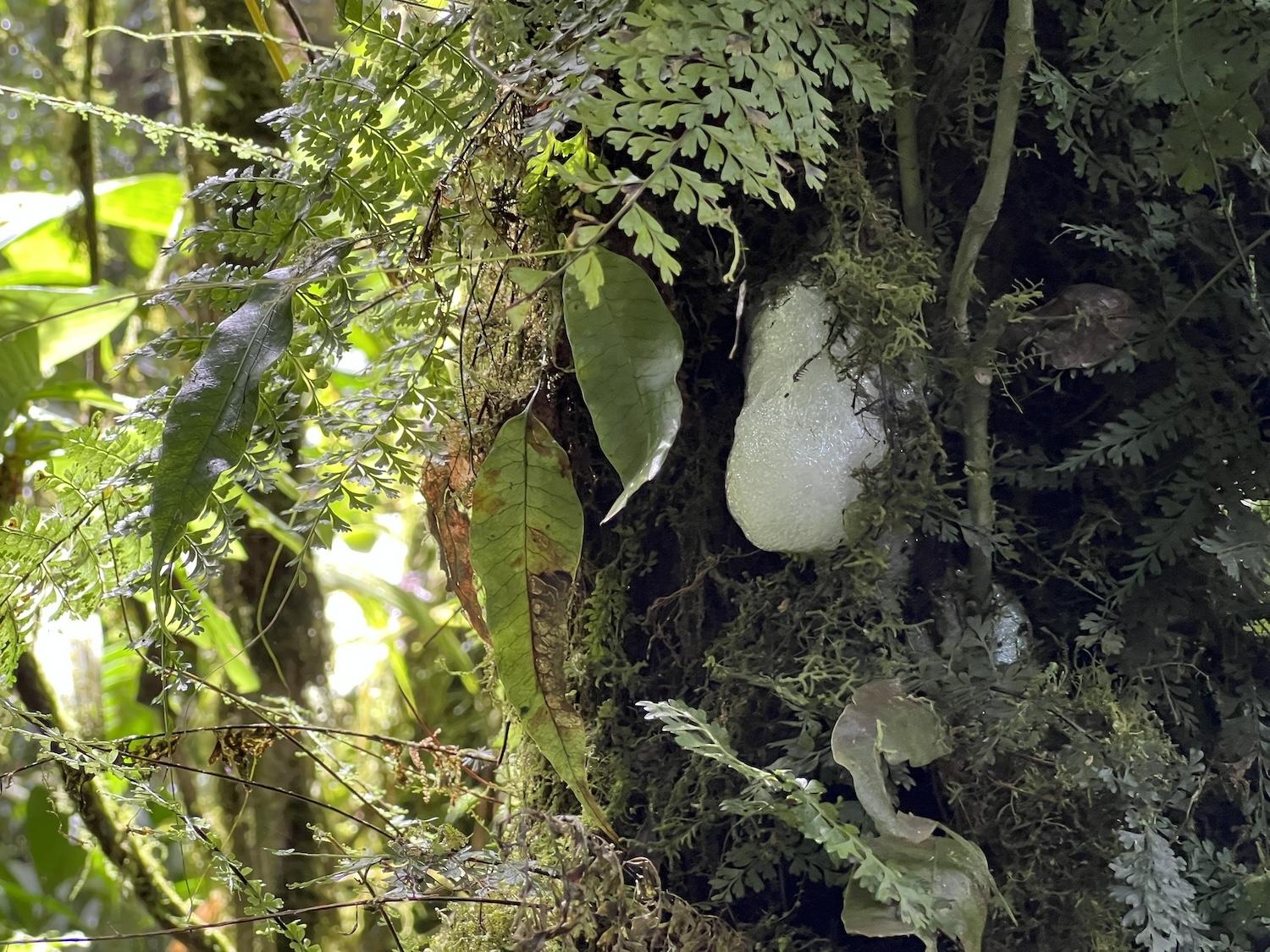
In Santa Elena Cloud Forest Reserve, the túngara frog protects its eggs with a foam mass/Jennifer Bain
For the cloud forest portion of the trip, Exodus arranges our stays at the Monteverde Country Lodge in Santa Elena. To explore the Caño Negro and Arenal Volcano area, it’s the Arenal Montechiari Hotel in La Fortuna.
It’s at the latter hotel where Leal gathers us at 6 a.m. one morning to explore the lush grounds.
“Listen, listen,” she says, hushing us at one point. “That’s the poison-dart frog.”
We can’t find the tiny red amphibian known for its brilliant hues and toxic skin, but we spot sloths in the trees and I snap a fun photo of a Red-lored parrot in a leafless tree with a Short-billed pigeon. We take note of a Clay-colored thrush (the Yigüirro in Spanish), a rather drab and common bird that’s inexplicably the national bird of Costa Rica in part because it least has a gorgeous song. The national bird of nearby Guatemala? Our new friend the quetzal.
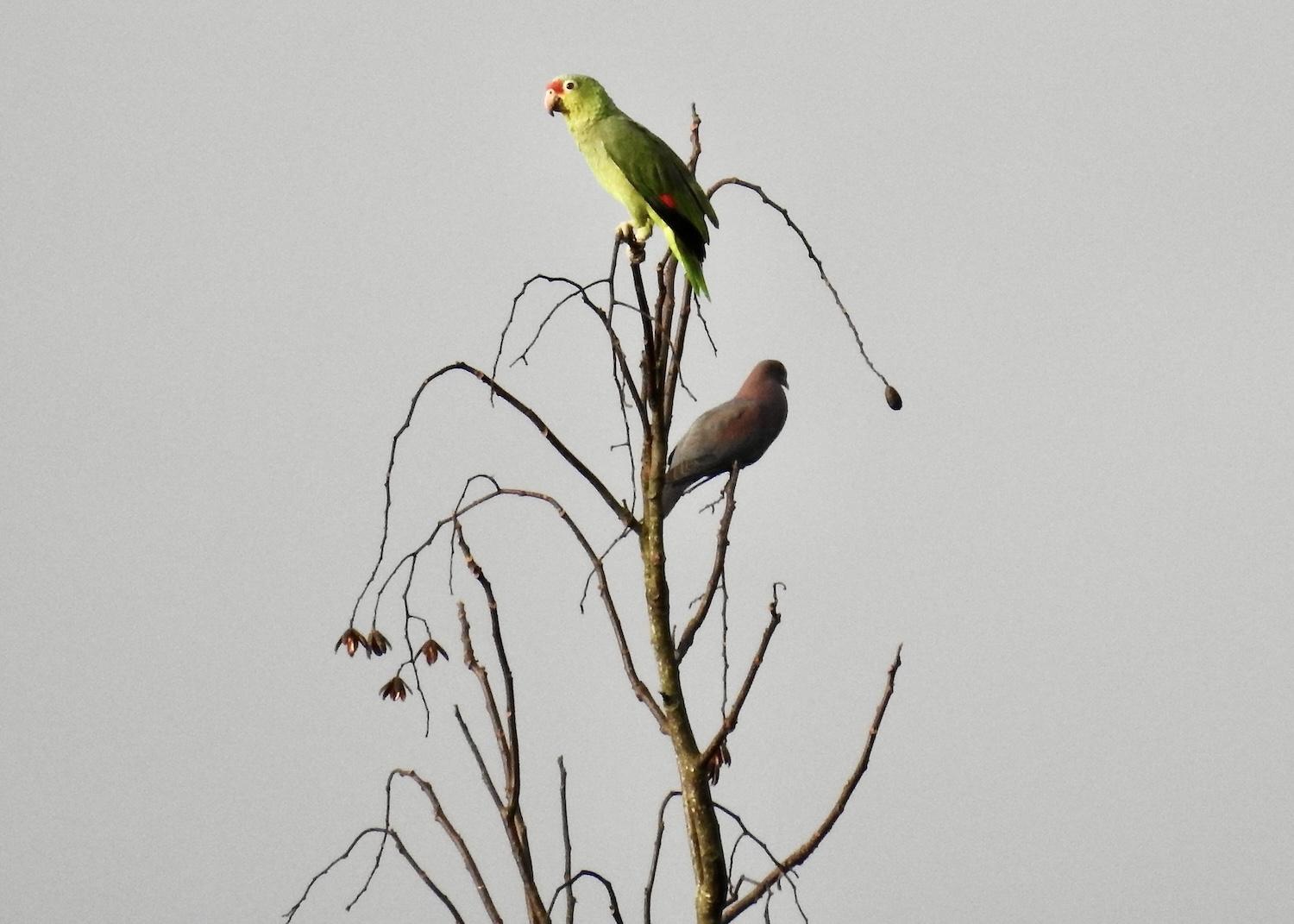
On the grounds of the Arenal Montechiari Hotel in La Fortuna, a Red-lored parrot shares a tree with a Short-billed pigeon/Jennifer Bain
From La Fortuna we drive north one morning to Los Chiles near the Nicaragua border to take a covered motorboat along the Río Frío and explore the area near the Caño Negro Wildlife Refuge, a RAMSAR site of worldwide importance for wetlands conservation.
“The idea is to go slow looking for everything that wants to go out,” advises Leal. “I always say that we’re going to see everything the forest is going to show us.”
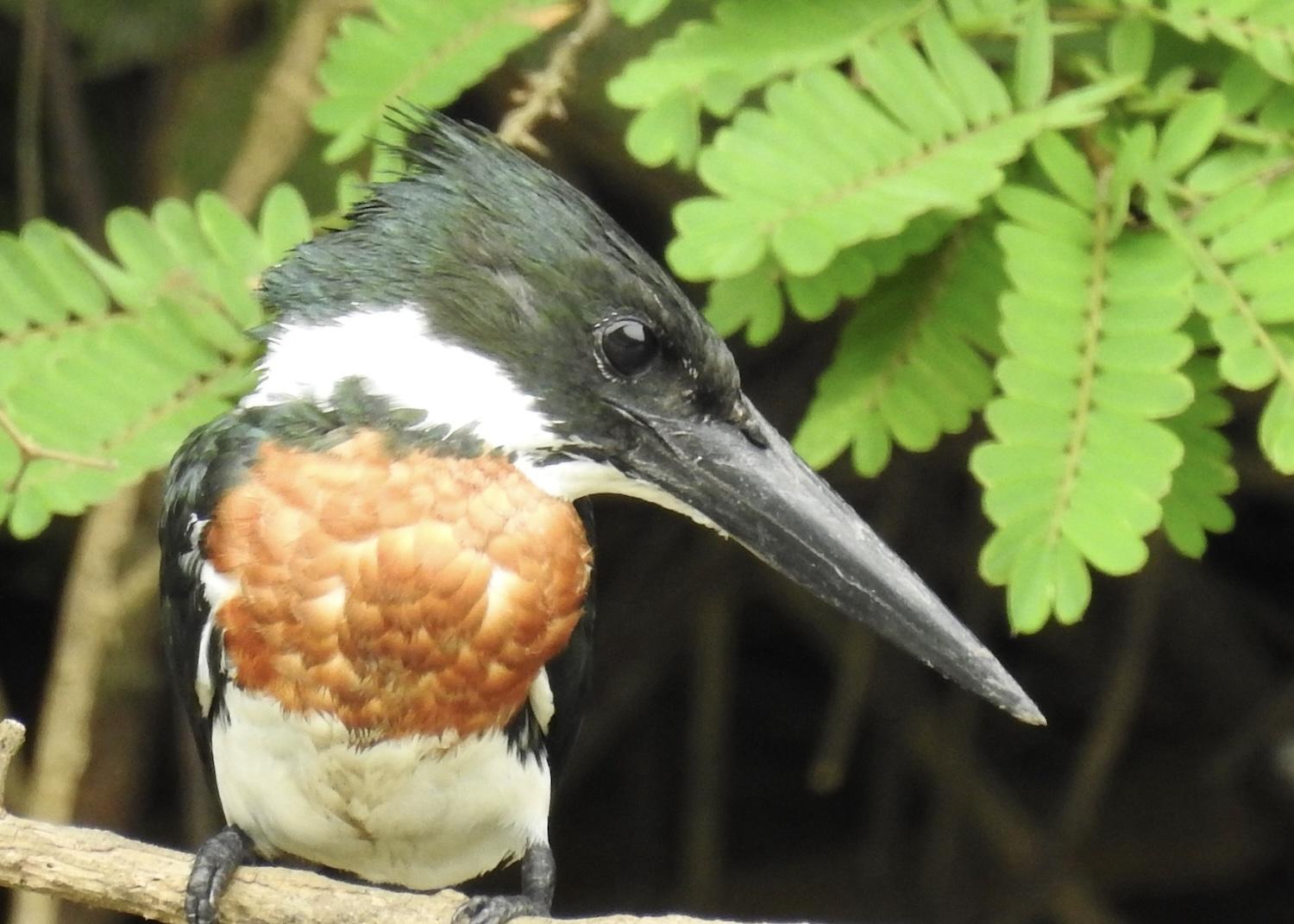
Near Los Chiles, Costa Rica, an Amazon kingfisher is spotted along the river/Jennifer Bain
We start off strong with Amazon kingfishers, a juvenile Tiger heron, a female Anhinga (the snake bird) and a caiman plus howler, spider and white-faced capuchin monkeys. When we see shaggy brown fur in a tree, the group teasingly moans: “Not another sloth. Anything but a sloth. If it’s a sloth, keep going.”
Our boat driver does lead us to two cool finds.
We get out at one point and walk away from the river towards a field to admire a Snowy owl he has spotted that morning and that has stayed put.
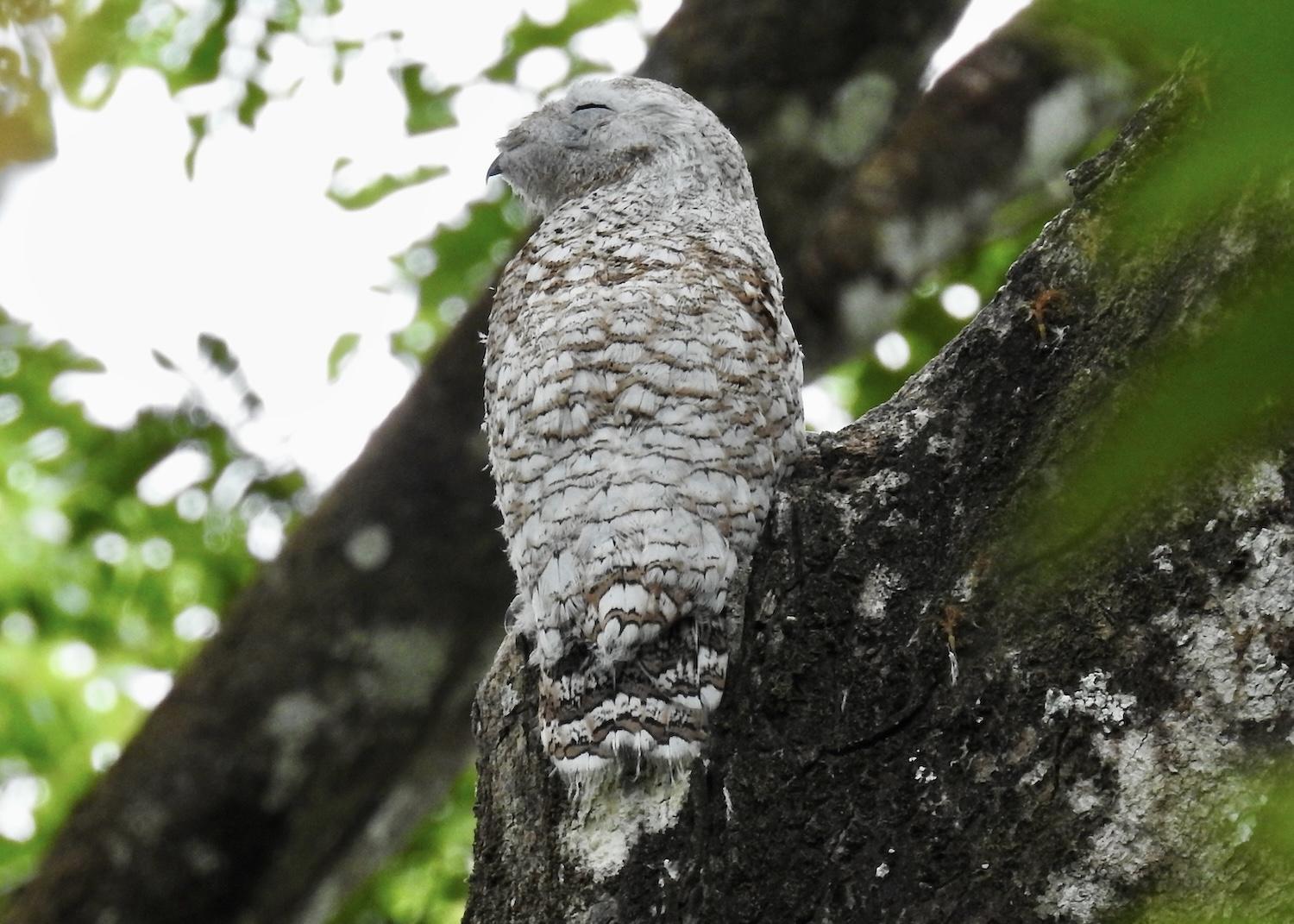
It seems odd to see a Snowy owl in steamy Costa Rica, but this one was spotted near the Caño Negro Wildlife Refuge/Jennifer Bain
And at another spot along the river, the man we know only as Mango, and who shares Spanish tidbits for Leal to translate, quietly pulls the boat up to a tree trunk by the riverbank that has unusual, highly camouflaged creatures clinging to it.
They’re Long-nosed Bats, also known as Proboscis Bats, and they’re sleeping. Some of us are repulsed. Others are in love.
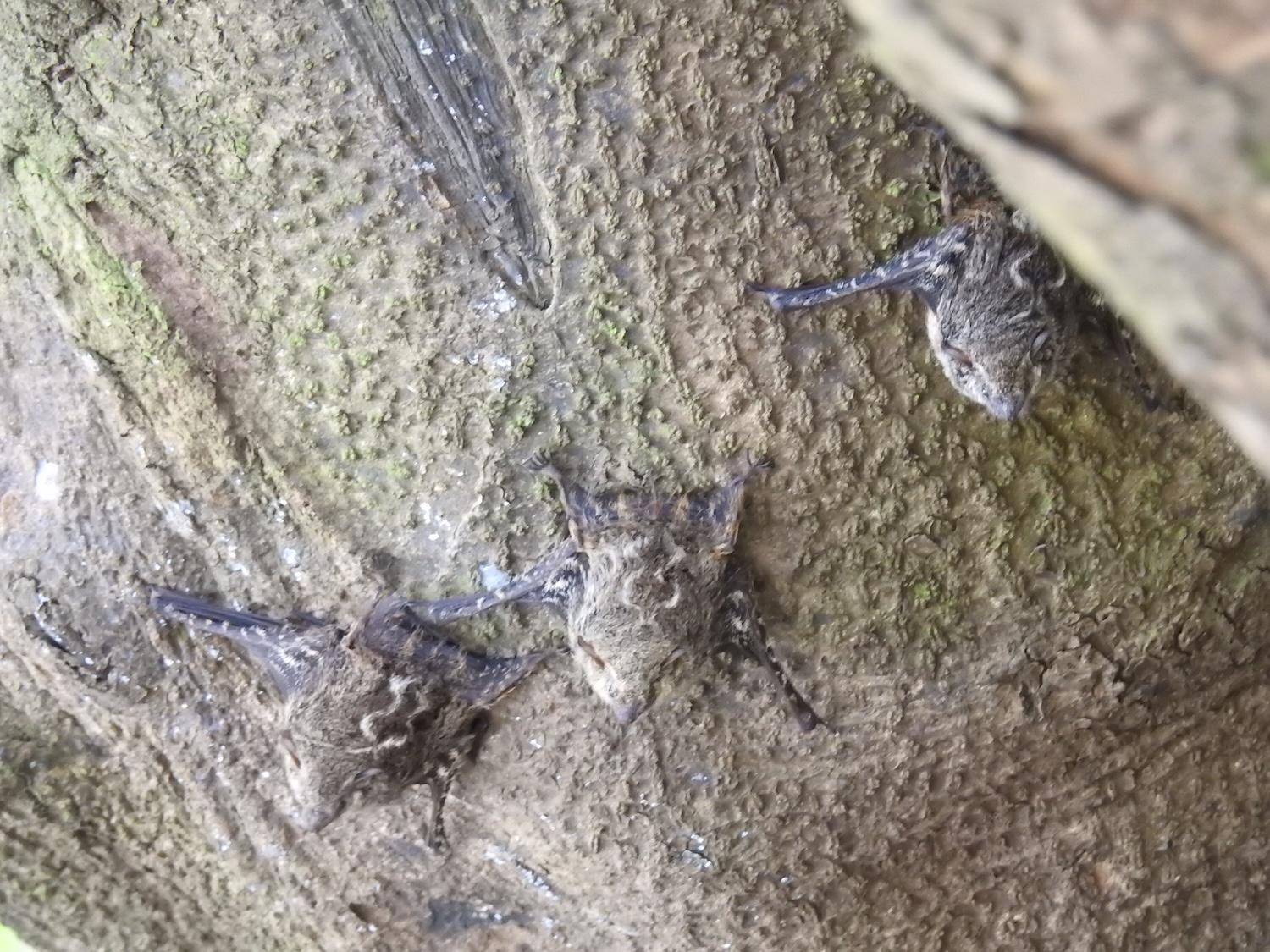
On a wildlife boat tour near Los Chiles, we spot Proboscis bats sleeping on a tree trunk/Jennifer Bain
For an afternoon outing that day, I leave the group behind and hire a private guide to take me to Arenal Volcano National Park. We have been admiring the volcano from our hotel, and from the town of La Fortuna, but it seems a shame there are no plans to hike it.
Leal hooks me up with her friend Rebecca Gómez, general manager of Tropical Paradise Tours, who says it’s too late in the day to start a visit to the park because it closes at 4 p.m. Besides, it only has a few trails and no interpretation like in North American parks.
Instead, Gómez suggests Arenal 1968, a private business on land next to the park that also boasts trails on hills formed by lava but is open until 5 p.m. “They’re not much different. It’s the same forest and the same view,” she assures me.
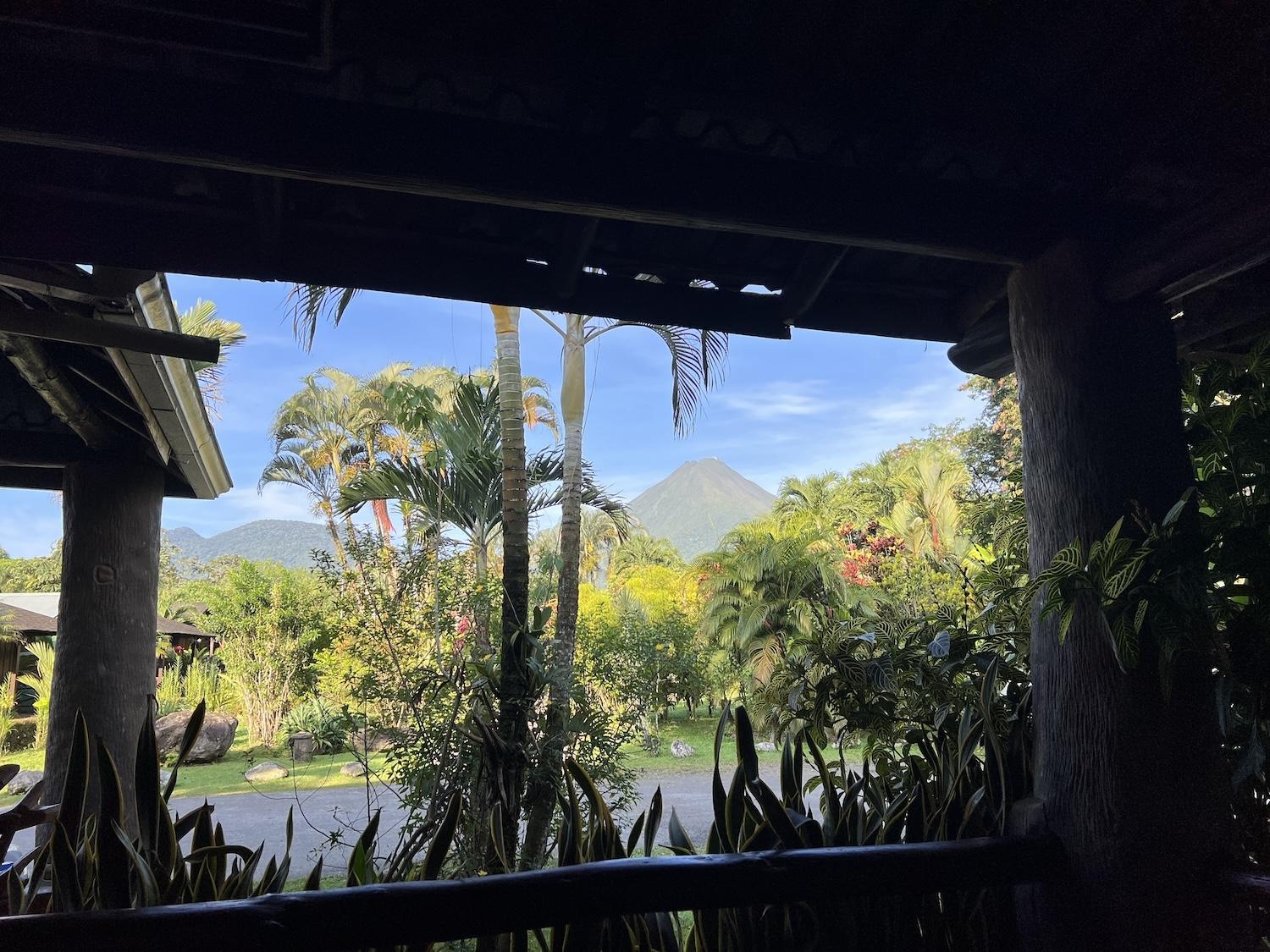
The Arenal Volcano looms over La Fortuna. It’s shown here from the Arenal Montechiari Hotel/Jennifer Bain
Gómez fell in love with this volcano when it was active and considers it “a magic place.”
At 7:30 a.m. on July 29, 1968, the Arenal Volcano suddenly and violently erupted after staying relatively dormant for hundreds of years. The volcanic activity lasted several days, killed 87 people, destroyed three villages and buried more than nine square miles in rock, lava and ash.
The volcano stayed active until 2010, spewing hot rocks, smoke, ash and lava. Now it’s Costa Rica’s best-known volcano and stands 5,437-feet tall over pastured green hillsides. It’s illegal to hike to the top, but you can explore the base to learn about lava flows and wildlife.
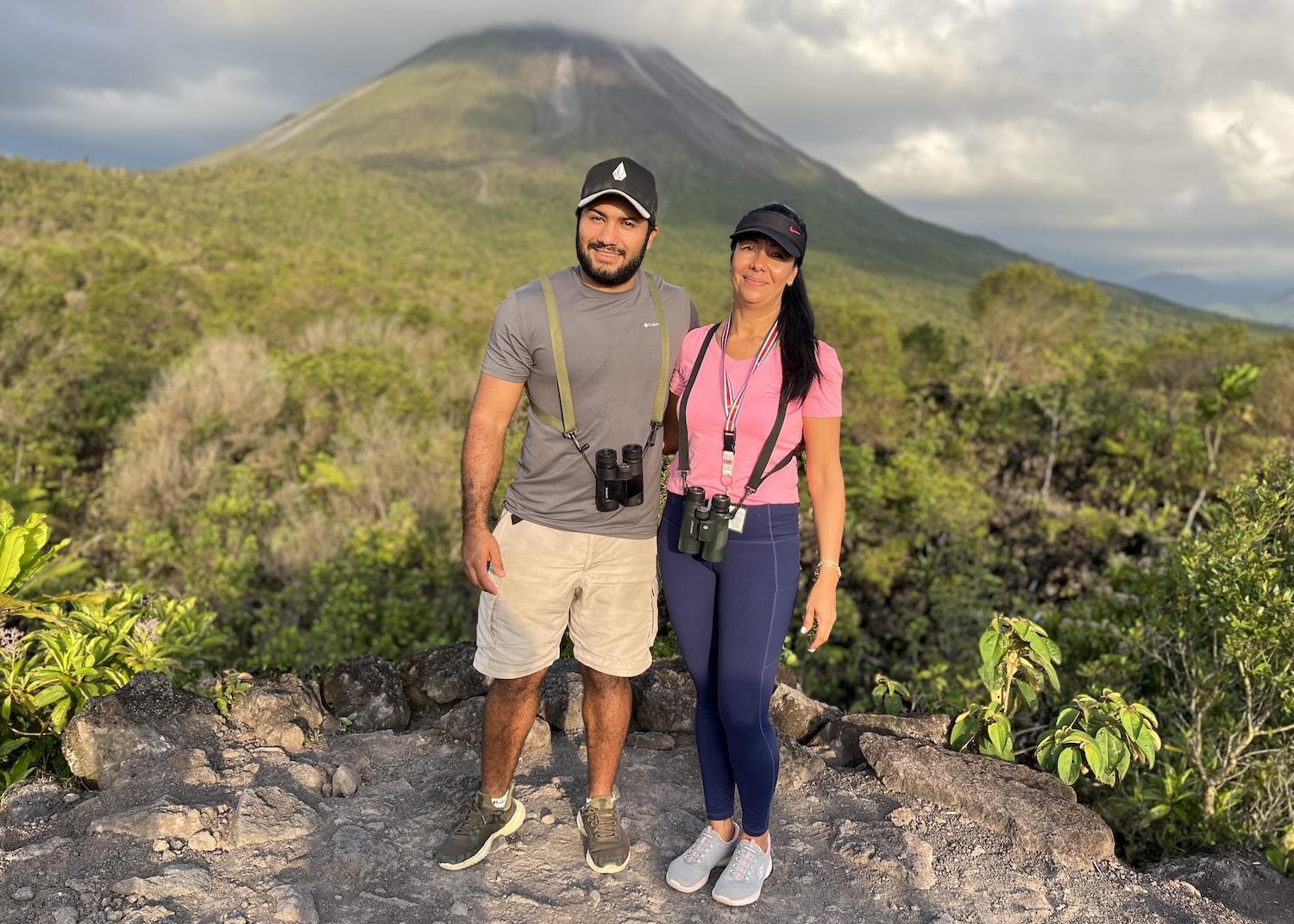
Jarvin Morra and Rebecca Gómez are shown while hiking in Arenal 1968 next to Arenal Volcano National Park/Jennifer Bain
“It’s a place that has lots of creatures, many of them active during the day, many of them active during the night,” says Gómez. “If you hear birds, it means everything is fine. If it’s quiet, it means a big animal might be close and ready to attack.”
We don’t spot any jaguars (thankfully) but it turns out our driver Jarvin Morra is a bit of a snake whisperer who finds a green vine snake on the rainforest floor and then discovers a venomous eyelash pitviper hiding at shoulder level in a young tree.
As the sun sets in this birder’s paradise, we take a moment to appreciate a White hawk, Hoffmann’s woodpecker and Great Kiskadee.
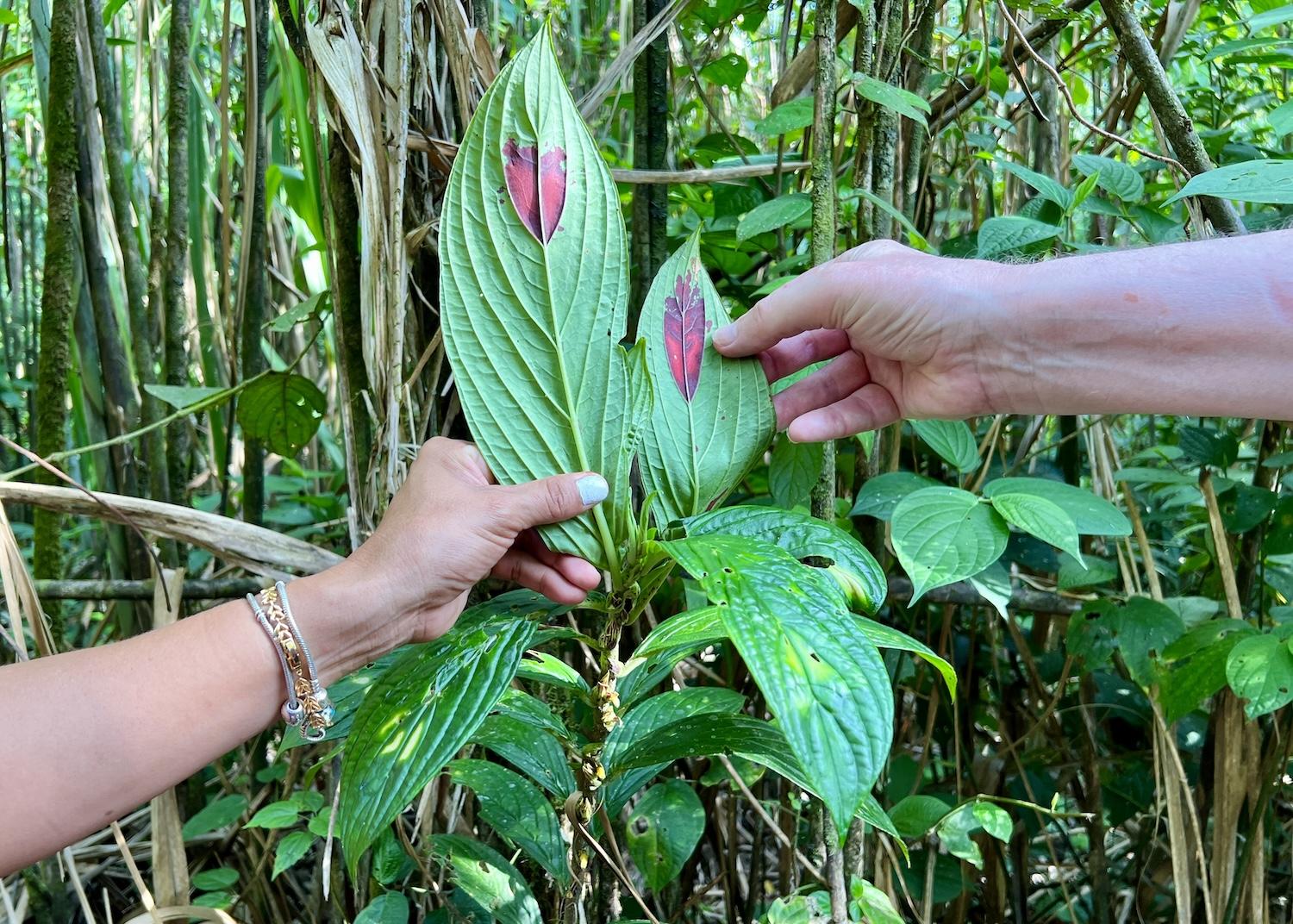
The Blood of Christ plant has red, heart-shaped markings on the undersides of its leaves to attract pollinators/Jennifer Bain
Two unusual things from this hike stay with me, and neither has anything to do with volcanoes.
One is called Blood of Christ (Columnea consanguinea) and it’s a flowering plant with red, translucent markings on the undersides of its leaves that attract hummingbirds to pollinate its otherwise inconspicuous flowers.
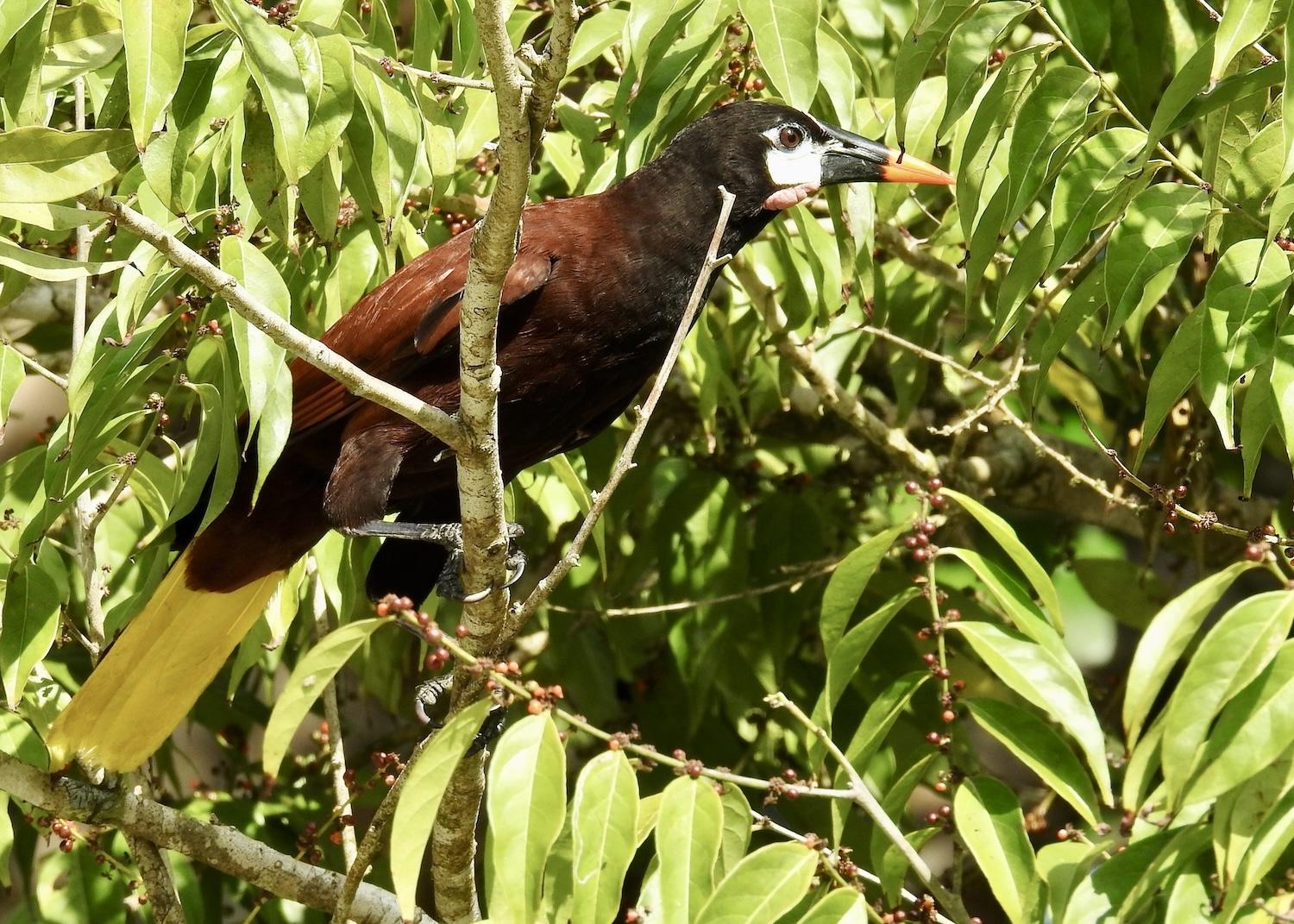
The Montezuma Oropendola is a distinctive bird in Costa Rica that has an unusual nest/Jennifer Bain
The other is related to the Montezuma oropendola, a rust-colored “blackbird” of the tropical lowlands with a black head, bold yellow sides to its tail and an ornate face that I’ve seen here and there on this trip.
Near the Arenal 1968 parking lot where we end our hike by drinking young coconuts and eating coconut cookies, there’s a huge guava tree with eerie-looking masses hanging from the branches. These long, intricately woven sacs are Montezuma nests designed to evade predators and prevent eggs from falling out in heavy winds.
The Dr. Seuss-like nests sway in the air, just like we did on that suspension bridge while admiring the quetzal. I can just make out the silhouettes of eight birds standing guard on nearby branches.
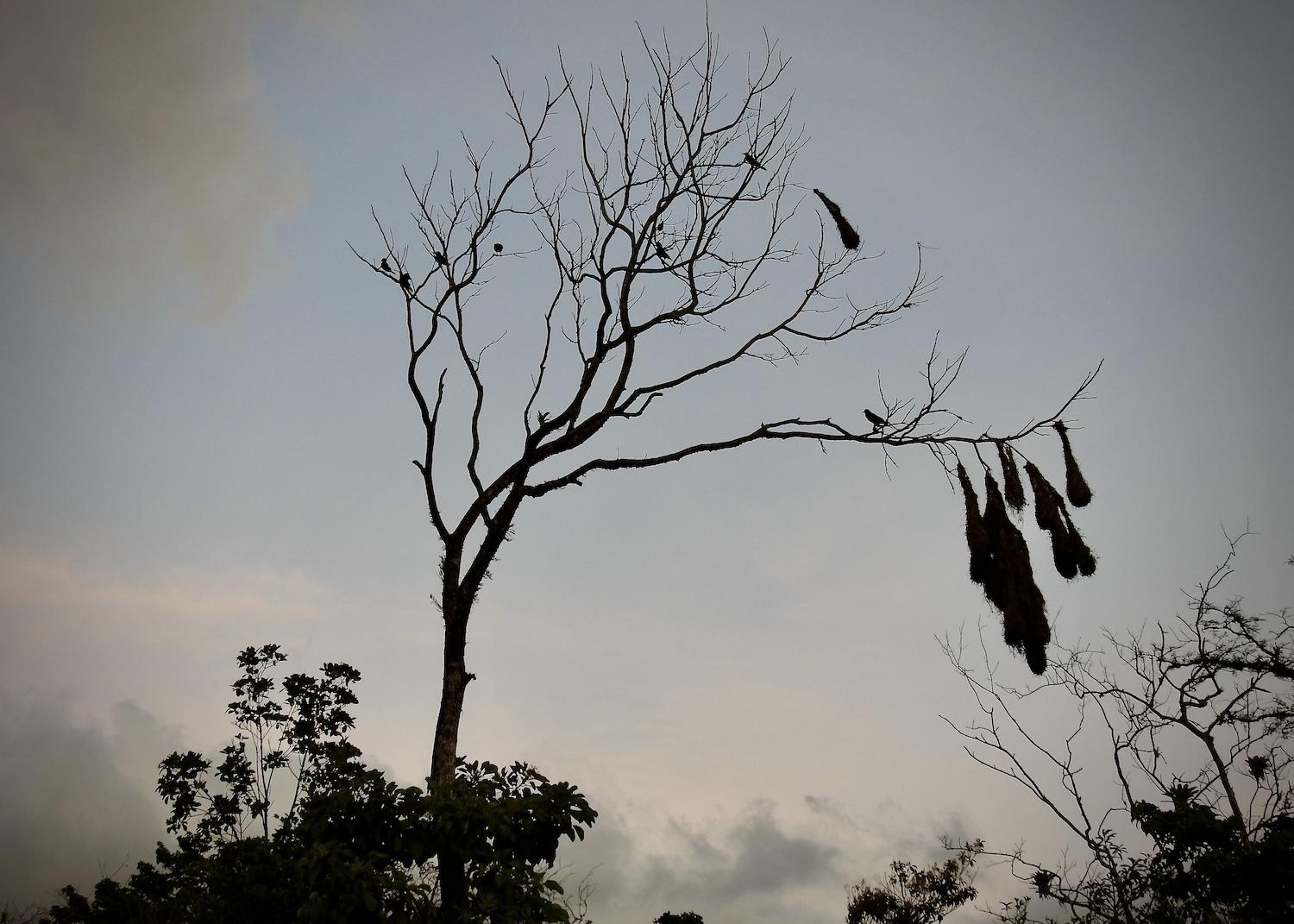
Montezuma Oropendola bird nests hang in a guava tree in Arenal 1968 near La Fortuna, Costa Rica/Jennifer Bain





